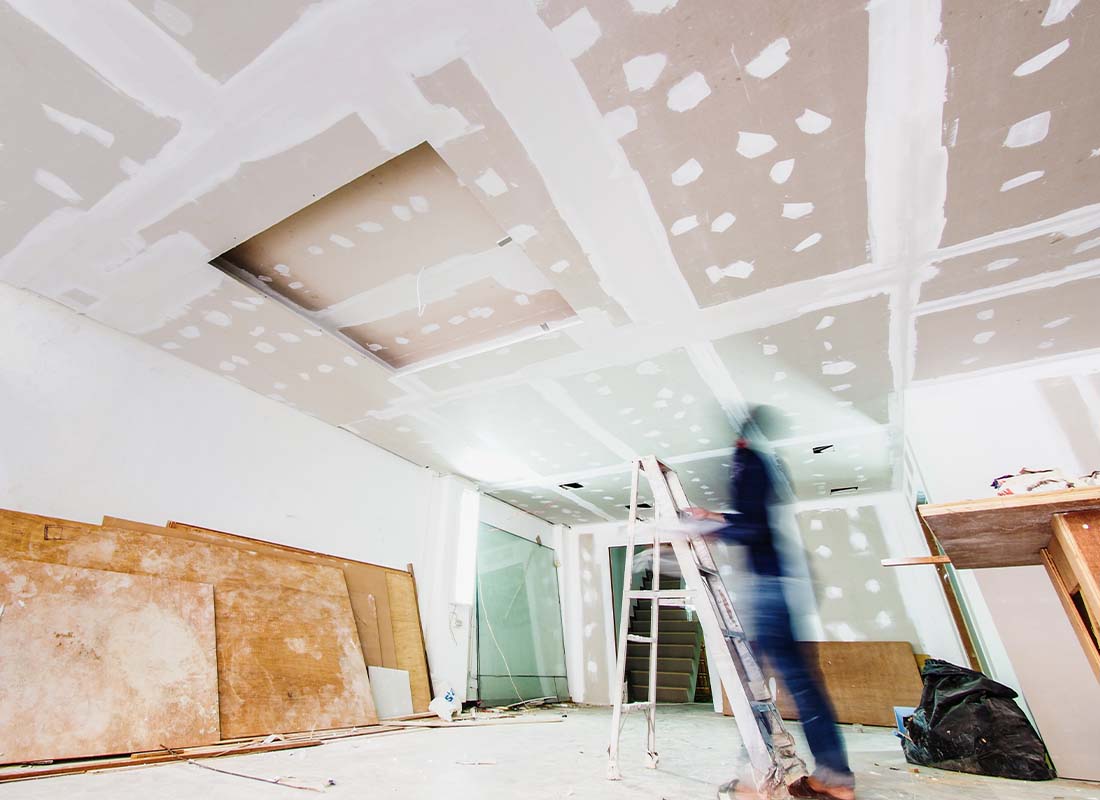Total Overview to Efficient and Dependable Drywall Installation
Drywall setup is an important element of any building or restoration project, demanding a thorough method to guarantee both performance and integrity. It is essential to check out the nuances of each step in the procedure, as they collectively add to the total success of the drywall installation.
Vital Tools for Drywalling
When starting a drywall setup job, having the right devices is vital for accomplishing a specialist coating. Vital devices consist of a drywall knife, measuring tape, and a T-square, which are basic for exact measurements and smooth cuts. A drywall lift is additionally very advantageous, especially for ceiling installations, enabling less complicated handling of hefty panels.
For attaching the drywall, a cordless drill and drywall screws are needed. The drill should be equipped with a drywall little bit to make sure effectiveness and precision. Furthermore, a vital tool is the drywall saw, which assists in cutting around electric outlets and other obstacles.

Moreover, safety equipment such as shatterproof glass and a dirt mask are necessary to make sure individual security during the installation procedure. Utilizing the right devices not just enhances the high quality of the setup yet also streamlines the process, making the job much more effective total.
Preparing the Area

Next, examine the problem of the walls and ceilings. Repair any kind of existing damages, such as openings, cracks, or peeling off paint, to make sure a smooth and also surface for drywall application. In addition, look for electric outlets, pipes lines, and cooling and heating air ducts, noting their areas to prevent problems throughout setup.
It is also essential to measure the space precisely, figuring out the dimensions of the ceilings and walls to calculate the suitable quantity of drywall needed. Create a thorough strategy that includes the format and orientation of the drywall panels.
Setup Methods
Effective installment strategies are vital for accomplishing a specialist coating you could check here in drywall jobs. Appropriate measurement and cutting of drywall sheets are basic steps.
When hanging drywall, begin with the leading and work downward, making certain that the long edge of the board is perpendicular to the framework. Secure the sheets with screws instead of nails, which provide greater holding power and lower the risk of popping. Place screws every 12 inches along the sides and every 16 inches in the area of the board.
For corners, use corner grains to attain sharp, clean sides. When mounting on ceilings, make use of a drywall lift or have a companion help in holding the sheets in area (drywall fort worth). Preserve a gap of regarding 1/4 inch above the flooring and ceiling to accommodate development and tightening
Finishing Touches

Once the tape is in area, it's time to apply the very first layer of joint substance, also recognized as mud. Make use of a 10 to 12-inch taping knife to spread the compound uniformly over the taped joints, feathering the edges to blend with the bordering drywall.
Permit the compound to completely dry thoroughly, typically 1 day. After drying out, sand the surface lightly with fine-grit sandpaper to eliminate any type of imperfections. drywall installation. Repeat the mudding and sanding process, usually a couple of coats, guaranteeing each layer is flush and smooth with the drywall surface
Common Mistakes to Avoid
Many DIY fanatics come across mistakes during drywall installment that can jeopardize the results. One common blunder is stopping working to appropriately determine and cut drywall sheets. Incorrect cuts can cause voids and irregular joints, making completing a lot more labor-intensive. Additionally, neglecting to stagger joints can produce weak factors in the wall surface, resulting in prospective splitting or drooping with time.
Another frequent error is inappropriate attachment. Using also few screws or nails can lead to loosened blog here drywall, while overdriving fasteners can trigger the paper to tear, compromising the framework. It's vital to maintain regular spacing, usually every 16 inches, and to ensure that bolts are flush with the surface area.
Moreover, not dealing with dampness concerns before setup can result in mold and mildew development and structural damage. Always evaluate the atmosphere and usage moisture-resistant drywall in high-humidity areas.
Final Thought
Effective and reliable drywall installation calls for meticulous interest to detail throughout the procedure. Staying clear of typical blunders better adds to a specialist outcome, underscoring the importance of precision and technique in effective drywall jobs.
It is crucial to check out the subtleties of each step in the procedure, as they jointly contribute to the total success of the drywall installation.When getting started on a drywall setup project, having the right devices is important for achieving more an expert coating.For attaching the drywall, a cordless drill and drywall screws are essential.Effectively preparing the room is essential for an effective drywall installment.Reliable installment strategies are essential for attaining an expert coating in drywall jobs.